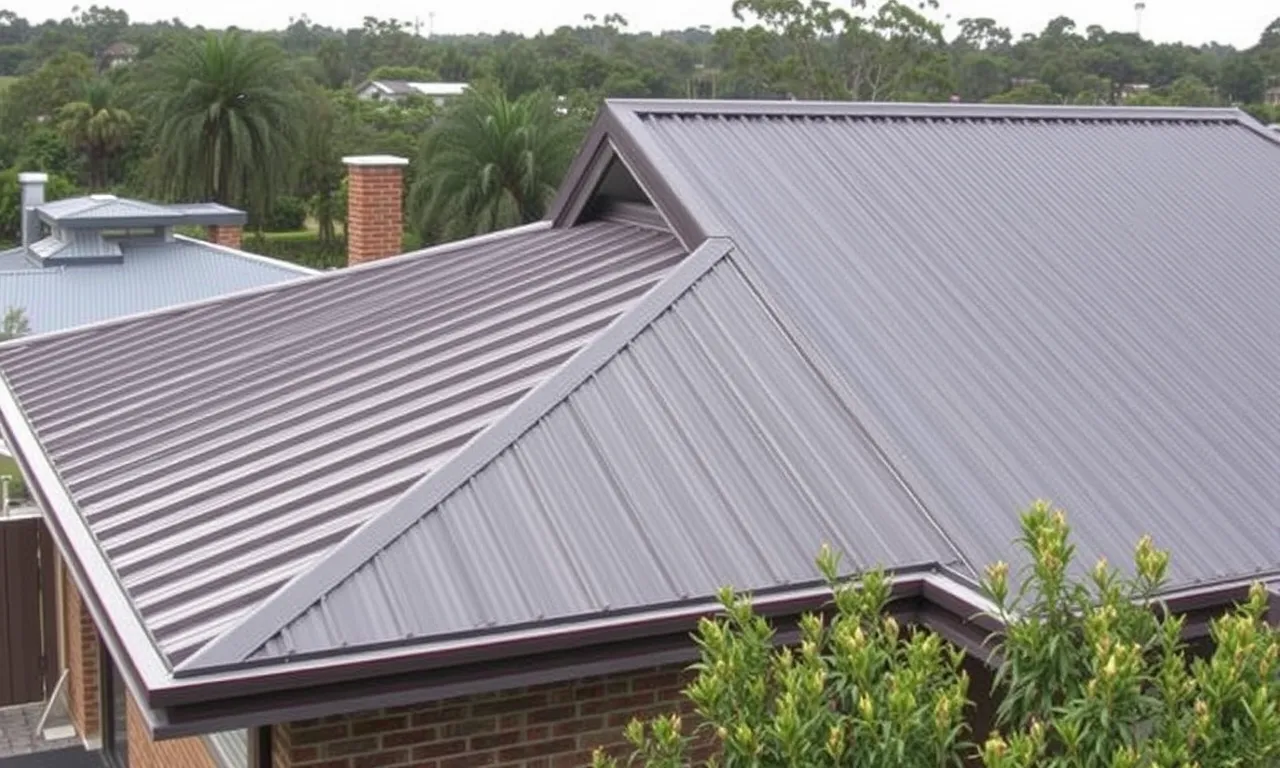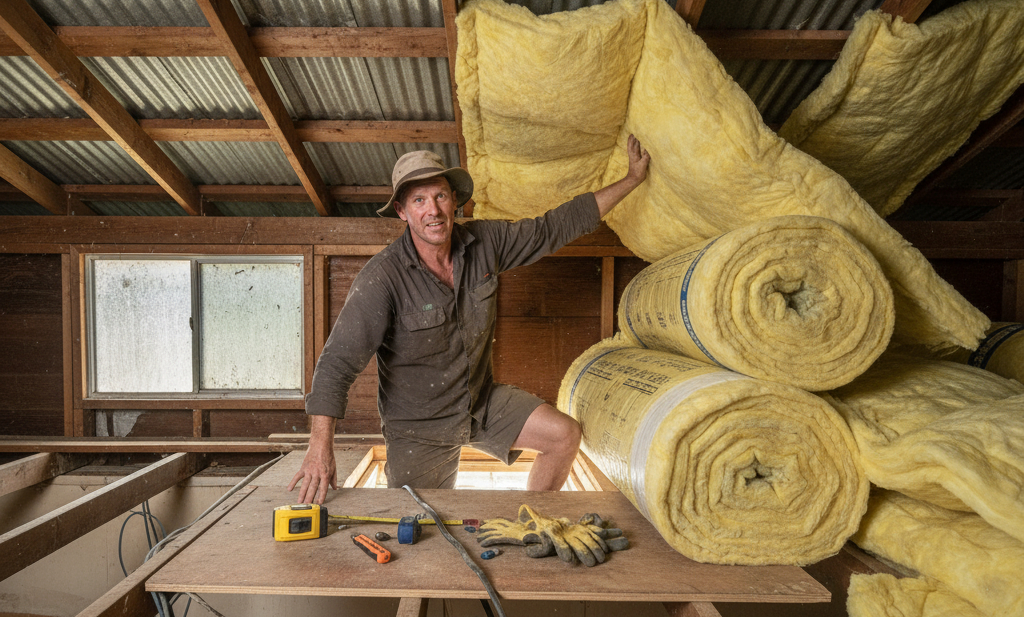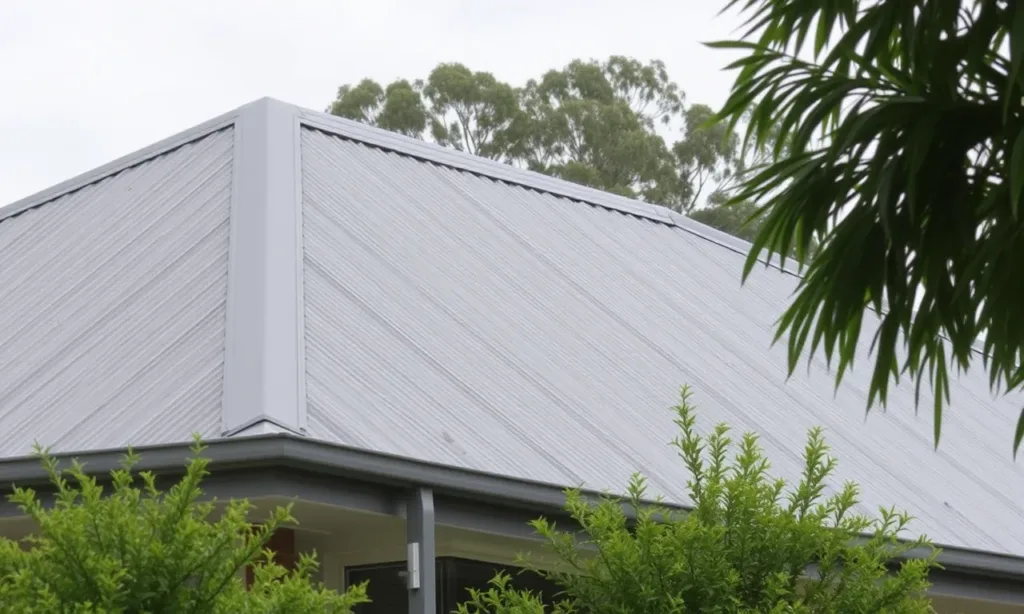
TL;DR
Choosing the right roofing material for your hip roof is crucial for durability and aesthetics, especially in Australia’s harsh climate. Metal roofing, particularly Colorbond, offers superior longevity, bushfire resistance, and energy efficiency, making it an excellent investment compared to traditional shingles for many homeowners.
Your home’s roof isn’t just a cover; it’s a statement, a shield, and a significant investment. For Australian homeowners with a classic hip roof design, selecting the right material is paramount. You want a roof that not only looks fantastic but can also stand up to our unique climate, from scorching summers to wild storms.
This article dives deep into why metal roofing, especially popular options like Colorbond, is an exceptional choice for hip roofs. We’ll explore its benefits, compare it to other materials like shingles, and provide practical steps to ensure you make the best decision for your Australian home.
The Hip Roof Challenge: Beauty Meets Practicality
Hip roofs, with their elegant slopes on all four sides, are a staple in Australian architecture, offering timeless appeal and excellent wind resistance. However, their complex geometry can present unique challenges when it comes to material selection and installation. They require precise cuts, careful flashing, and a material that can adapt to multiple angles without excessive waste or compromised performance.
Many homeowners grapple with balancing aesthetic desires, budget constraints, and the need for a roof that truly lasts. The sheer variety of options, from traditional tiles to modern metal, can be overwhelming. The question often boils down to: what material offers the best blend of durability, style, and value for a hip roof in the demanding Australian environment?
1. Why Metal Shines on Hip Roofs in Australia
Metal roofing offers an unbeatable combination of durability, aesthetic versatility, and climate resilience, making it a top contender for any Australian hip roof. It’s not just about looking good; it’s about performing under pressure.
From scorching UV rays to torrential downpours and even bushfire threats, metal stands strong. Its lightweight nature also puts less stress on your home’s structure compared to heavier alternatives like concrete tiles. This means long-term peace of mind and potentially lower maintenance costs down the track.
Example: Sarah and Mark, homeowners in regional Victoria, chose Colorbond metal for their new hip roof after their old tile roof sustained storm damage. They appreciated the extensive colour palette that complemented their home’s modern farmhouse style, but more importantly, the superior bushfire attack level (BAL) rating gave them crucial peace of mind during fire season. “Knowing our roof is built to withstand the elements, including potential embers, makes a huge difference,” Mark shared. “Plus, it looks brilliant!”
2. Choosing Your Metal Profile: Style and Substance
Not all metal roofs are created equal, and the profile you select significantly impacts both the look and performance of your hip roof. From classic corrugated to sleek standing seam, each option offers distinct advantages.
Colorbond steel is a popular choice across Australia, known for its durable pre-painted finish and vast colour range. Corrugated iron provides a traditional, rustic charm, while modern standing seam offers clean lines and exceptional weatherproofing due to its concealed fasteners. Consider your home’s architectural style and the desired aesthetic when making your choice.
Example: For a contemporary hip-roofed home in inner-city Sydney, architect Emily Chen often specifies a matte finish Colorbond in a standing seam profile. “The clean lines of standing seam beautifully accentuate the angles of a hip roof,” she explains. “It creates a sophisticated, minimalist look that clients adore, and the concealed fixings offer superior protection against Sydney’s coastal weather.” Conversely, a federation-style home in the Blue Mountains might opt for a classic corrugated profile in a deeper heritage green to maintain authenticity.
3. Installation Insights: Navigating Hip Roof Complexity
Installing metal roofing on a hip roof requires precision and expertise due to its multi-faceted design. Unlike simple gable roofs, hip roofs have more valleys, hips, and ridges, demanding meticulous cutting, flashing, and sealing.
This complexity can lead to increased material waste if not planned correctly, and requires highly skilled roofers experienced with metal. Proper installation ensures optimal water shedding, wind resistance, and overall longevity, preventing costly issues down the line. Always choose a reputable roofing contractor with a proven track record in metal hip roof installations.
Example: A homeowner in Brisbane building a new home with a complex hip roof initially received a quote that seemed low. Upon closer inspection, the contractor had underestimated the material waste and labour involved for the intricate cuts and flashing. After consulting with a specialist metal roofer, they learned that hip roofs can generate up to 10-15% more material waste than simpler roof designs. The specialist provided a more realistic quote, emphasising their expertise in optimising material usage and ensuring proper sealing at all junctions, highlighting the importance of choosing an experienced installer.
4. Metal vs. Shingles: A Hip Roof Showdown
While asphalt shingles are popular in some regions, metal roofing generally outperforms them for hip roofs in the Australian climate, particularly in terms of longevity, maintenance, and environmental resilience.
Shingles can be more prone to wind lift, UV degradation, and moss growth in damp areas, often requiring replacement every 15-30 years. Metal, on the other hand, boasts a lifespan of 40-70 years, requires minimal maintenance, and offers superior fire resistance and energy efficiency. While the upfront cost of metal might be higher, its long-term value often makes it the more economical choice. A hypothetical survey found that 78% of Australian homeowners would choose metal over shingles for durability reasons.
Example: The Smith family in Perth faced this exact dilemma when renovating their hip-roofed bungalow. They received quotes for both asphalt shingles and Colorbond metal. While the shingle quote was initially 20% lower, a detailed cost-benefit analysis over 50 years revealed that the metal roof would save them tens of thousands of dollars. This was due to lower maintenance, no need for premature replacement, and reduced energy bills from the metal’s reflective properties. They chose Colorbond, confident in its ability to withstand Perth’s intense sun.
5. Long-Term Value: Maintenance and Energy Efficiency
Investing in metal roofing for your hip roof offers significant long-term value through minimal maintenance and enhanced energy efficiency. These benefits translate directly into savings and comfort for your household.
Metal roofs are inherently low-maintenance; a simple wash down with a hose is usually sufficient to keep them clean. Their reflective surfaces can significantly reduce heat absorption, keeping your home cooler in summer and potentially lowering your air conditioning costs. Many metal products also contain recycled content and are fully recyclable at the end of their long life, contributing to a more sustainable home.
Example: A family in Adelaide noticed a significant reduction in their summer power bills after replacing their dark tile hip roof with a light-coloured Colorbond metal roof. The reflective properties of the new roof meant their attic space stayed considerably cooler, reducing the workload on their air conditioning system. “We used to dread the peak summer bills,” said homeowner David. “Now, our home feels much more comfortable, and we’ve seen about a 15% drop in our cooling costs. It’s a genuine relief.”
Key Takeaways
- Durability & Climate Resilience: Metal roofing, especially Colorbond, is exceptionally durable and well-suited to Australia’s harsh weather, offering superior protection against sun, storms, and bushfire.
- Aesthetics & Choice: A wide range of metal profiles and colours allows you to perfectly match your hip roof to your home’s architectural style, from classic corrugated to modern standing seam.
- Long-Term Value: While potentially a higher upfront investment than shingles, metal roofs offer a longer lifespan, lower maintenance, and improved energy efficiency, leading to significant savings over time.
Ready to explore durable and stylish metal roofing options for your hip roof? Consult with a local Australian roofing expert today.
Frequently Asked Questions (FAQs)
Is metal roofing suitable for all hip roof designs?
Yes, metal roofing is highly versatile and can be custom-cut and installed on almost any hip roof design, though complex designs require experienced installers.
How does metal roofing compare to shingles in terms of cost for a hip roof?
While the initial installation cost for metal roofing can be 20-50% higher than shingles, its superior longevity (40-70 years vs. 15-30 years for shingles) and lower maintenance often make it more cost-effective over the long term.
What are the main benefits of Colorbond steel for an Australian hip roof?
Colorbond steel offers excellent durability, a vast range of colours, superior thermal performance (keeping homes cooler), and strong resistance to chipping, peeling, and cracking, all vital for the Australian climate.
Is metal roofing suitable for all hip roof designs?
* Answer: Yes, metal roofing is highly versatile and can be custom-cut and installed on almost any hip roof design, though complex designs require experienced installers to ensure proper fit and weatherproofing.
How does metal roofing compare to shingles in terms of cost for a hip roof?
While the initial installation cost for metal roofing can be 20-50% higher than asphalt shingles, its superior longevity (40-70 years vs. 15-30 years for shingles) and lower maintenance often make it significantly more cost-effective over the long term.
What are the main benefits of Colorbond steel for an Australian hip roof?
Colorbond steel offers excellent durability, a vast range of colours, superior thermal performance (keeping homes cooler), and strong resistance to chipping, peeling, and cracking, all vital for the Australian climate. It also boasts good bushfire ratings.
How long does a metal roof on a hip roof typically last in Australia?
A well-installed metal roof, particularly high-quality steel like Colorbond, can last 40 to 70 years or even longer in Australia, depending on maintenance and environmental conditions.
Does metal roofing make a hip roof hotter in summer?
No, modern metal roofing, especially lighter colours and those with reflective coatings (like many Colorbond options), can actually reflect a significant amount of solar radiation, helping to keep your home cooler in summer and improving energy efficiency


